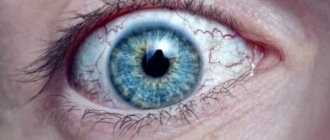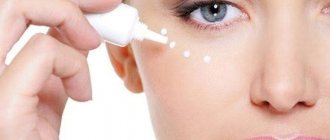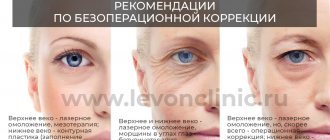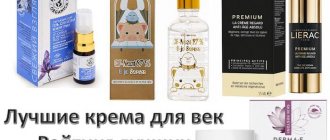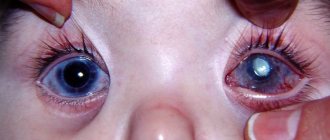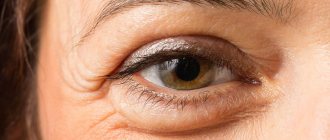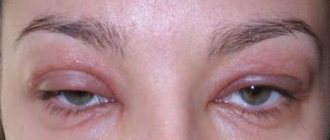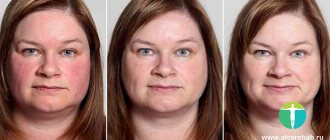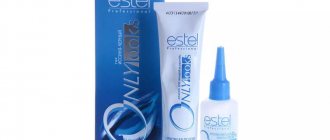For mild to moderate eye injuries, when help is needed urgently and you still need to get to the hospital, the use of ointments or drops may not be entirely convenient. The first - due to their viscous consistency, the second - due to their excessive fluidity. Korneregel eliminates both of these problems.
This gel-like drug was immediately adopted by both eye medicine specialists, who understand eye problems at the cellular and molecular levels, and rural paramedics, who may have the most general knowledge about the subject.
Korneregel is convenient because the gel is less fluid than drops, and introducing it into the conjunctival sac does not require a horizontal position. Korneregel serves as a soft lubricant when the eyelid moves across the cornea - even if there are microtraumas on it. And the long narrow spout of the tube will prevent you from accidentally squeezing out too much of the drug.
Help with domestic and work injuries
“The world is imperfect, if only because it is unsterile.” You are fully aware of this truth when “out of the blue” a foreign object gets into your eyes. And no matter how small it is, the hypersensitive surface of the eye immediately reacts with lacrimation, stinging sensations, and pain.
The most common mechanical damage to the eyes is sand getting into them, usually from gusts of wind. Many grains of sand, being crystals of a very durable quartz mineral, have sharp edges. They are invisible, but can cause serious damage to the cornea.
Abrasion occurs - a violation of the integrity of the outer cover of the cornea in contact with atmospheric air. And the larger the object that gets into the eye, the deeper the scratch, the more serious the course of keratitis subsequently. This is especially true for metal shavings, which can not only damage the cornea by scratching it, but also penetrate deep into its surface.
So what can damage your eyes other than dust?
- Particles of cosmetics in girls - especially if some of its components can act as an allergen. Or shadows applied to the eyelids: old, do not stick well to the skin of the eyelids, sooner or later they will get into the conjunctiva with sweat or tears.
- Glass, ceramics, plastic, metals in the form of dust and shavings in industries where safety rules are neglected and eye protection devices (shields, goggles) are not used.
- Tree branches, sharp grass like sedge or reeds, small seeds of fruit-bearing herbs - during outdoor recreation or field work in rural areas
- Nails, toys, sports equipment during sports, sharp edges of thick paper in the office
- Incorrect installation of contact lenses and neglect of care when installing or removing them.
First aid is to rinse the eye with clean water. And immediately after this, to prevent traumatic inflammation of the outer layers of the eye, drug treatment is needed. At least the most basic things. The use of Korneregel after washing the eye mucosa from foreign matter is guaranteed to relieve further problems. Dexpanthenol included in Korneregel helps in healing microtraumas of the cornea due to its regenerating properties.
Use of yellow mercury eye ointment
Yellow mercury ointment is the collective name for a number of drugs. It is based on mercury. The ointment is intended for external use. It can relieve the inflammatory process of nodules, allergic reactions, swelling, redness and itching. An ointment composition is applied to nodular tumors that have not reached five millimeters and have not become denser. The drug is prepared in a pharmacy as prescribed by a doctor. The properties of the ointment soften the purulent capsule, while simultaneously acting as an antiseptic.
The medicine is placed behind the eyelid of the affected eye at least 2 times a day. Children under six years of age need to apply the ointment while sleeping. To do this, you will need to take a gauze cloth, place a small piece of ointment composition on it and secure it with a bandage or plaster on the head. When you wake up in the morning, before removing the bandage, moisten it with warm water so as not to damage the skin.
The course of treatment is fourteen days.
Korneregel for eye burns
Thermal
When they talk about thermal burns, a priori they mean high-temperature exposure. Basically this is what happens. This can be splashes of liquid metal from exposure to high temperatures, superheated oil or simply boiling water, as well as contact with burning materials during fires or explosions.
But thermal burns (only with a minus sign) can also include burns received from materials and liquids with ultra-low temperatures, and these are liquid oxygen and nitrogen, as well as particles of solid carbon dioxide, which are used when extinguishing fires in live electrical wiring. Their effect, especially long-term, on the skin or mucous membranes of a person, in its consequences can be no less destructive than the effect of heated or simply very hot environments.
What first aid is possible?
- In the absence of severe damage, rinse the eye with an antiseptic in the form of Miramistin or chlorhexidine.
- Inject 1-2 drops of Kornegel under the lower eyelid. Blink.
- Cover the injured eye with a clean, sterile cloth and wait for professional help.
Chemical burns to the eye
Possible from exposure to drops or aerosols of chemically active substances in the form of alkalis, acids, certain types of fuel, oxidizing agents and solvents. In everyday life, these can be household aerosols, tile and plumbing cleaners containing chlorine or alcohol, carelessly used gas cartridges intended for self-defense.
Photoburn of the surface of the eyes
It happens from exposure to a welding arc during electric welding - such an arc has a particularly hard ultraviolet radiation spectrum. The dangerous distance of a direct, unprotected look at such an arc for more than 10 seconds is 2-3 meters.
But ultraviolet burns are also possible outside of production, where welding work is carried out. They can be obtained by quartzing without protective glasses, on a beach with light, reflective sand on a sunny day, and even on a winter afternoon during sunny weather, when there is intense reflection of sunlight from the snow cover. Especially in the mountains.
And not only the cornea, where signs of a burn will be redness and even clouding, is affected by UV radiation, but also the retina. Such a burn causes pain in the eyes, difficulty blinking, and photophobia. When you are in a room or on a site where welding work is being carried out, combined eye damage is possible.
It may include thermal, chemical and radiation burns of both the cornea and the underlying layers of the lens and retina. And such a combination of damaging factors occurs during welding, when the eye is exposed to severe irradiation in the UV spectrum, splashes of molten metal, smoke and other small aerosol particles from the combustion of electrode components (flux additives contained in the electrically conductive welded layer, solid acid and powdered metal) .
Severity of eye burns
- The first one is easy. Redness and slight swelling of the conjunctiva, possible irritation of the cornea with the appearance of small ulcerations of the stratum corneum.
- Second, middle. Bubbles and easily removable films may appear on the surface of the cornea. The cornea has a slight degree of opacity.
- Third, hard. Severe clouding of the cornea, traumatic films cannot be removed, burnt skin on the eyelids tends to necrosis.
- The fourth one is very difficult. Tissue necrosis in case of failure to provide emergency assistance, deep clouding of the layers of the cornea.
Symptoms of a welding burn, including a combined burn, include burning in the eyes and under the eyelids, photophobia, eyelid spasms and profuse lacrimation.
Help with improvised means in the form of eye drops with dexpanthenol or Korneregel without qualified doctors, before their arrival, makes sense for 1st and 2nd degree burn injuries. In cases of the 3rd and 4th, you need to limit yourself to applying sterile napkins to the eyes and quickly take the victim to the hospital.
Diagnostics
The diagnosis of “erosion” is made based on the results of a thorough diagnosis. External examination and evaluation of the corneal surface is performed using a slit lamp and a microscope. This technique allows you to identify areas of irregularities in the corneal endothelium. Small foci of erosion appear when stained with fluorescein, which clearly marks even microscopic flaws.
The doctor also examines the pattern of eyelash growth on both eyelids, examining not only the line of the ciliary row, but also the inner surfaces of the eyelids, where individual eyelashes may appear abnormally, directed towards the eyeball. At the same time, the ophthalmologist makes sure that there are no real foreign objects in the eye if there are complaints about the corresponding subjective sensations.
If you or your relatives have suffered a corneal injury, we recommend that you contact a specialized eye clinic, incl. to our ophthalmology center. Experienced specialists will quickly diagnose and prescribe effective treatment, which will help avoid the development of serious complications!
Infectious and non-infectious eye lesions
Infectious keratitis is not the rarest disease that affects the cornea of the eye. It happens
- Superficial, affecting only the outer layer of the cornea
- Deep, when the inner layers are affected and scars form in them
The forms in which such keratitis occurs can be acute (initial), chronic (advanced without treatment or with unqualified treatment) and recurrent (also arising for a second reason).
Viruses such as adenovirus, herpes, and cytomegalovirus can cause an infectious form of keratitis. Bacteria – staphylococcus, streptococcus, Pseudomonas aeruginosa and tuberculosis bacillus. As well as fungal and, less commonly, amoebic infections.
Non-infectious keratitis
Most often associated with mechanical or chemical injuries. Treatment depends on the severity of the lesion, but in non-severe forms, the use of Korneregel or other drugs containing dexpanthenol is justified and necessary. If started in a timely manner, such treatment using panthenol-containing drugs will prevent the formation of cataracts and scars on the cornea.
Treatment of corneal erosion
Since the damaged endothelium during erosion is located directly on the surface of the eye, the most effective are local drugs: keratoprotectors in the form of ointments and drops. These include:
- Korneregel
- Balarpan
- VitA-Pos
Topical or oral antibiotics may also be needed if there is a risk of secondary infection in the injured area, such as:
- Tsipromed
- Levomycetin
- Tobrex
- Eye ointments Floxal, Tetracycline, etc.
Regardless of the composition of the preparations, ointments are applied at night, and treatment with drops is carried out during the day according to the scheme (up to 3-4 times).
Composition of Kornegel and instructions for use
“Korneregel” is the trade name of the drug for sale in pharmacies. The international name of this ophthalmic agent is Dexpanthenol. The therapeutic and regenerative effect on the cornea is due to the presence in the gel, ointment, solution or drops of a chemically synthesized complete analogue of the natural substance pantothenic acid, contained in the antlers of deer - a powerful means of restoring injured tissue.
1 gram of dexpanthenol contains 50.0 mg of active substance.
As excipients, in addition to purified water, it contains gel thickeners and antioxidant preservatives.
The appearance of the gel is a transparent, slightly opalescent, viscous and low-flowing substance. It belongs to the therapeutic group of reparative tissue-restoring stimulants.
Therapeutic properties
Dexapanthenol is a participant in many processes occurring in the body. It increases fibroblast proliferation and shows a pronounced restorative effect. In damaged skin and conjunctiva, there is an increased need for pantothenic acid, which is generously compensated by Korneregel.
The carbomer included in its formula, which has a complex and branched molecular structure, prevents the gel from penetrating deep into the tissue and thus being absorbed into the bloodstream. This allows Korneregel to remain in contact with the outer layers of the cornea for longer.
Indications
- In the treatment of non-inflammatory keratopathies in the form of recurrent erosions, corneal dystrophies, minor traumatic injuries to the cornea from contact lenses.
- For injuries, chemical and thermal burns, it is used to enhance healing as an adjuvant.
- Also used as an adjuvant for infectious lesions of the cornea as a result of fungal, viral or bacterial effects.
Dexpanthenol easily overcomes the placental barrier in pregnant women and infiltrates through the ductal glands into breast milk. Thus, the concentration of pantothenic acid in the blood plasma gives grounds to use dexpanthenol only after an in-depth examination and consultation with a doctor. In other cases, the use of the drug is not limited except for those moments when there is a very rare individual intolerance.
Application of Korneregel for corneal injuries from contact lenses
Among non-severe forms of eye injuries, the most common cause is lenses:
- Not so selected;
- improperly worn;
- incorrectly installed and removed.
A combined effect of trauma factors is possible, in the form of a foreign object getting under the edge of the lens, which will aggravate its effect on the cornea due to the pressure of the lens itself on the foreign object.
- A foreign substance of protein, fat or mineral origin may be deposited on the surface of the cornea.
- The shape and size of the lenses could have been selected incorrectly, without taking into account the curvature of the surface of the outer layers of the eye.
- Damage to the cornea by nails when putting on or removing lenses.
- Violated storage rules or leaving. Most often, such violations occur when using untested, cheap or stitched liquids for storing contact lenses.
- Undiscovered in time, even during the selection of lenses, pathologies incompatible with them.
It would be a mistake to try to use medications in the form of ointments, drops, solutions and gels simultaneously with lenses. Exposure of the cornea to a traumatic factor and a medicinal drug neutralizes the effect of the latter and can even aggravate the inflammatory process that has begun.
It is also not recommended to touch your eyes with your hands, try to rinse them with water if you are not sure of its purity, or use folk remedies.
In any of the listed cases, the use of Korneregel for the treatment of such injuries is justified. Its soft structure resembles the lubricant of tears produced by the glands of the eye, with its healing and moisturizing effect.
Inflammation of the cornea is almost always associated with damage to the cornea. The rest is a consequence of diseases occurring deep in the eye tissue or generally associated with diseases of other internal organs. Therefore, along with antiseptic and antibacterial drugs, the use of regenerating medications is also indicated.
With the development and use of Korneregel, the situation has improved dramatically; now, having such a drug in your home or industrial medicine cabinet, you can quickly cope with vision problems if they arose as a result of traumatic factors.
When using drops and other forms of medications with antibiotics, Korneregel and other panthenol-containing medications should be used 15 minutes before or 15 minutes after using these medications.
